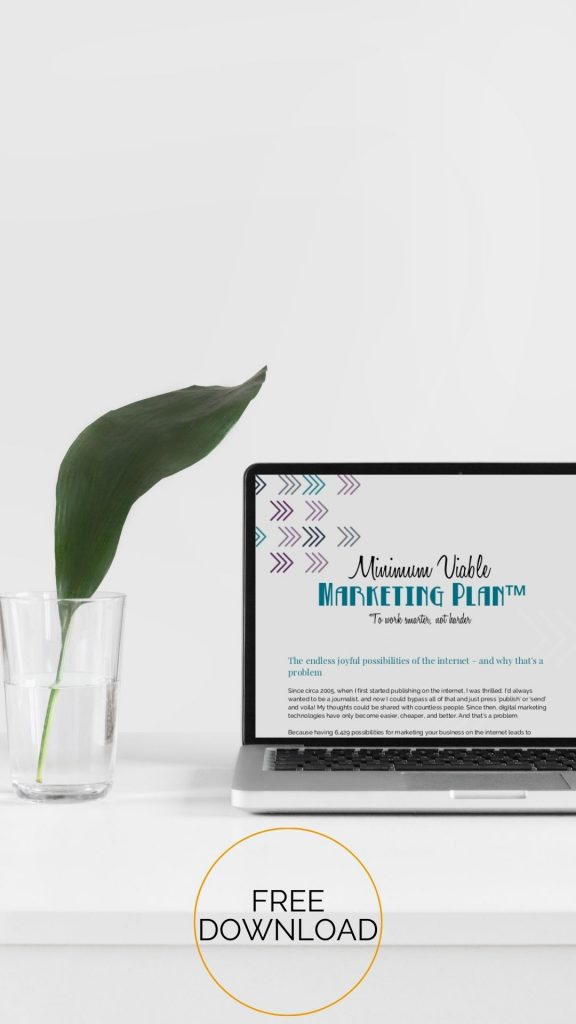She didn’t seem embarrassed. But I was mortified. She’d spent $10,000 on video production, $3000 on a whizbang tech set-up, and $1500 on graphic design, but hadn’t sold a single spot in her program.
I’d love to say this conversation was an isolated incident. But it’s not.
When you’re a successful coach, teacher or consultant, it’s common to want to create a group program. Not just common – it’s smart.
There are only so many times you can listen to yourself saying the same thing every single day before you want to take a vow of silence and go to Nepal to plait yak hair.
Selling group programs makes smart business sense. You’re leveraging your time and expertise. You’re honing your process into a methodology. You’re increasing your profits while building your professional reputation. What’s not to love?
After 14 years of supporting countless business owners to move from primarily selling one-to-one services to leveraging their expertise into group work, there are certain mistakes that I see owners making again and again. While it’s fabulous to have accrued experience in one-to-one before launching into group programs, it’s not the same.
Here are the most common mistakes that I see owners make – and what to do instead.
1: Complicating the tech set-up
This one drives me absolutely bonkers: the owner decides to create their first group program, so the very first thing they do is take out a subscription with the most expensive and hip software that the internet cool kids are using.
In order of what to do first, second, third, your tech setup sits about three quarters of the way down your list.
And – this is critical so stop multitasking now and listen to me – your tech set-up doesn’t sell your program nor signify quality, accessibility, or engagement.
I have invested $3500 US on a program that was delivered via Zoom and Google Drive. I’ve supported countless business owners through their first group program launch that was delivered via email, Stripe, Google Drive and Zoom – first-time launches that earned owners $18,000, $30,000 or even $55,000.
Repeat after me: “I will not procrasti-tech. I will not procrasti-tech. I will not procrasti-tech.”
What you need:
- Your email marketing software: to promote and register people through
- Either your sales page is hosted on your website, on an e-commerce tool such as Thrivecart (affiliate link) which I use, or on Google Drive
- Stripe: for taking payments. I have Stripe hooked up to Thrivecart, so my clients and myself only interact with Thrivecart.
- Perhaps Google Drive, or a password-protected part of your website, to host any training materials
- Vimeo to host your live call recordings and/or your video tutorials, if you’re going to have them.
2: Overdelivering on time instead of value
When you’re feeling insecure about your premium group program, it’s common to overdeliver with time. Which means endless, unproductive live sessions that begin to irritate and disengage people.
Your well-meaning actions provoke the opposite effect.
If something is cheap, I expect it’ll cost me my time. My IKEA wardrobe might be a great price but I’ll invest an afternoon of frustration, agony, and existential crises as I question the capitalist hamster wheel that convinced me that this wardrobe would solve all my problems, when I should be writing poetry in the woods and gazing at the stars as they emerge one by one amid the immense blackening sky.
If something is premium priced, I expect it will take less of my time to get the transformation I seek. Think: a $200 car wash service that includes a great coffee, wifi, and air-conditioning while I wait (for as little time as possible).
People aren’t paying to hang with you. They’re paying for the transformation you promise – as efficiently as possible.
3: Giving up after the first attempt
This one hurts. In 2013, after a year of running several face-to-face courses around Australia, I launched my first premium online group program while on an extended holiday in France with friends and family.
It was a disaster.
I made so many mistakes that it’s hard to pick the biggest one. Was it ruining a perfectly fabulous holiday with completely unnecessary stress? Was it not adequately preparing and being woefully unsupported? Or was it allowed my ego to stop me from launching another online group program for two more years?
Probably the last one.
Your ego is a liability in business. Get that prick under control. Every “failed” launch is an opportunity to learn invaluable things – but only if you stop your ego from spoiling the party.
4: Not pricing one-to-one in relation to your group program
This one is hugely common, easy to solve, and makes a massive impact once you’ve done so: not figuring out your group pricing in relation to your one-to-one pricing.
When you’re selling one-to-one consulting, coaching, or similar, then moving to group programs, you’ll need to adjust all your pricing.
Forget about what your competitors are charging. When you introduce a leveraged group program for the first time, your people will be considering your various services and looking at your pricing side-by-side. (Hint: raise your one-to-one price; don’t lower your group program price.)
Most people, in most cases, would rather engage one-to-one services. So, if you’re selling group programs and the price is similar, or the monthly payment plan is similar, then you’ll need to increase your one-to-one pricing accordingly.
Because otherwise? You’ll end up with an influx of new one-to-one clients and few, if any, people in your group program, which defeats the whole purpose, yes?
5: Waiting until it’s perfect
I mean this with all the love and encouragement that I can muster: get your goddamn head out of your arse and stop using arbitrary external cues to beat yourself up with.
“Oh! I’m such a perfectionist!” is like saying “I’m violent against myself and I truss it up to look pretty.”
Please hear this: your flagship group program (or other project you’re currently ‘shoulding’ all over yourself with) has no value until it’s in the hands of paying clients.
You may anticipate how it will be received but you cannot know this until real paying clients give you (informal) feedback.
Business (and life) isn’t a Disney movie. It’s a constant process of iterating, editing and improving. Over and over again. Until you die.
Stop stopping yourself, you gorgeous idiot. Launch the thing already.
What to do now, to get your group program going
- Fill out this survey for me (please and thank you)
- Write your one-page program plan, in a day
- Start surveying your clients and community, both formally and informally, to get to the heart of the program you’re solving
- Start testing your program messaging on social media (you don’t need to tell people that’s what you’re doing, and you don’t need to talk about the program … yet)
- Publish your preliminary sales page with your interest list form and start collecting emails
- Define your program promise based on what you’ve learnt
- Set yourself a deadline and decide on key dates
- Download my Essential Launch Checklist.






